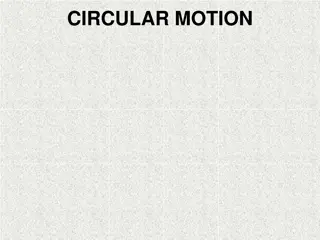Investigation of Falling Ball Motion Using Electronic Balance
This study explores the motion phases of a falling ball by analyzing the readings of an electronic balance connected to a PC. The experiment involves a light frame releasing a ball into water in a beaker placed on the balance, with results indicating different motion states. Through detailed phases and moments, the study illustrates the behavior of the falling ball in varying conditions.
Uploaded on Sep 07, 2024 | 2 Views
Download Presentation

Please find below an Image/Link to download the presentation.
The content on the website is provided AS IS for your information and personal use only. It may not be sold, licensed, or shared on other websites without obtaining consent from the author.If you encounter any issues during the download, it is possible that the publisher has removed the file from their server.
You are allowed to download the files provided on this website for personal or commercial use, subject to the condition that they are used lawfully. All files are the property of their respective owners.
The content on the website is provided AS IS for your information and personal use only. It may not be sold, licensed, or shared on other websites without obtaining consent from the author.
E N D
Presentation Transcript
International Young Naturalists Tournament 5. Falling ball Serbian team Regional Center For Talented Youth
5. Falling ball An electronic balance (1) is connected to a PC (5) in order to record the time dependence of the measured weight. A light frame (4) is mounted on a tall beaker (2) filled with water. The frame has a holder (3) allowing controlled release of a small ball such that it falls into the water. The beaker is placed on the balance as depicted in the Figure. Investigate how the readings of the balance reflect the different phases of the motion of the ball.
The background of the problem 1.Introduction 1.1.Apparatus 2.Experiment 3.Results 4.Conclusion
3 1.1.The apparatus 1 electronic balance 2 beaker filled with water 4 3 holder 4 light frame 2 5 PC 5 1
1 Phase 1 mg = F F mg
F v Qu t Phase 1
Phase 2 2 Fo << mg, R mg Fo mg
F v Qu Qu - Qb t Phase 1 Phase 2
Moment 1 h V1 = gt = Fo << mg, R mg 3 Fo mg
F v Qu Moment 1 Qu - Qb V1 t Phase 1 Phase 2
Phase 3 Fp + Fow> mg v2= v1 - at a Fp Fow 4 mg
F v Qu Moment 1 Qu - Qb V1 V2 t Phase 3 Phase 1 Phase 2
Phase 4 Fp + Fow= mg a = 0, v2 - const Fp Fow mg 5
F v Qu Moment 1 Qu - Qb V1 V2 t Phase 3 Phase 4 Phase 1 Phase 2
Moment 2 p = mv F = 6
F v Moment 2 Qu Moment 1 Qu - Qb V1 V2 t Phase 3 Phase 4 Phase 1 Phase 2
Phase 5 mg = N N 7 mg
F v Moment 2 Moment 1 Qu Qu - Qb V1 V2 t Phase 5 Phase 3 Phase 4 Phase 1 Phase 2
4. Conclusion F v Moment 2 Moment 1 Qu Qu - Qb V1 V2 t Phase 5 Phase 3 Phase 4 Phase 1 Phase 2
Thank you for your attention!























